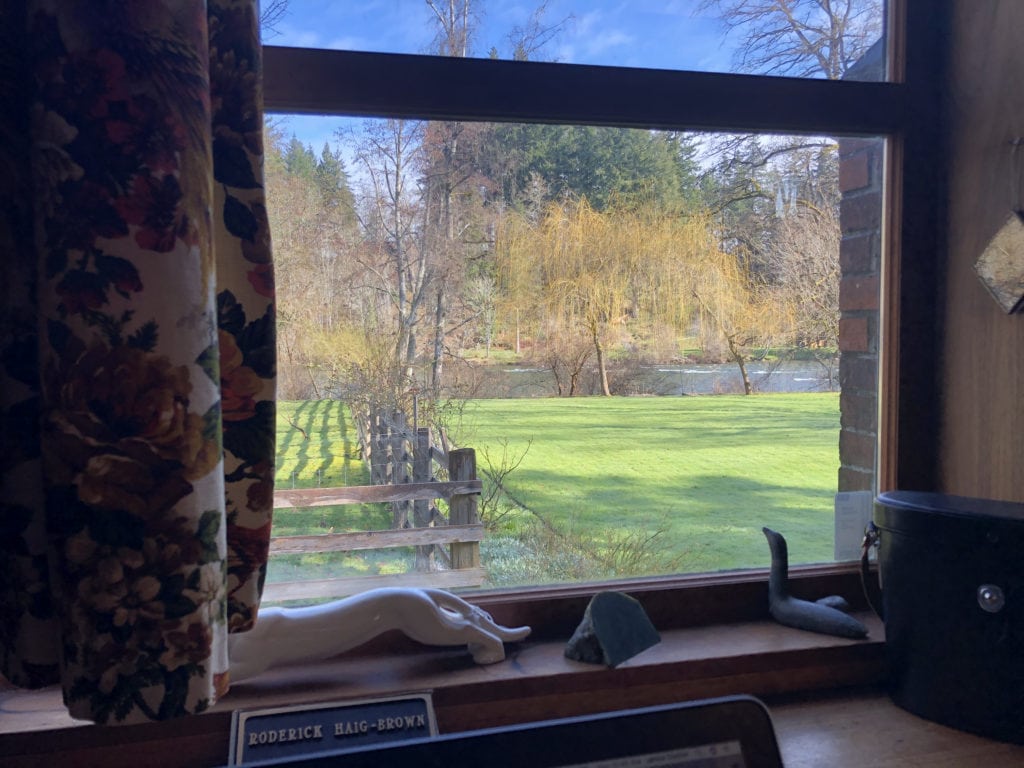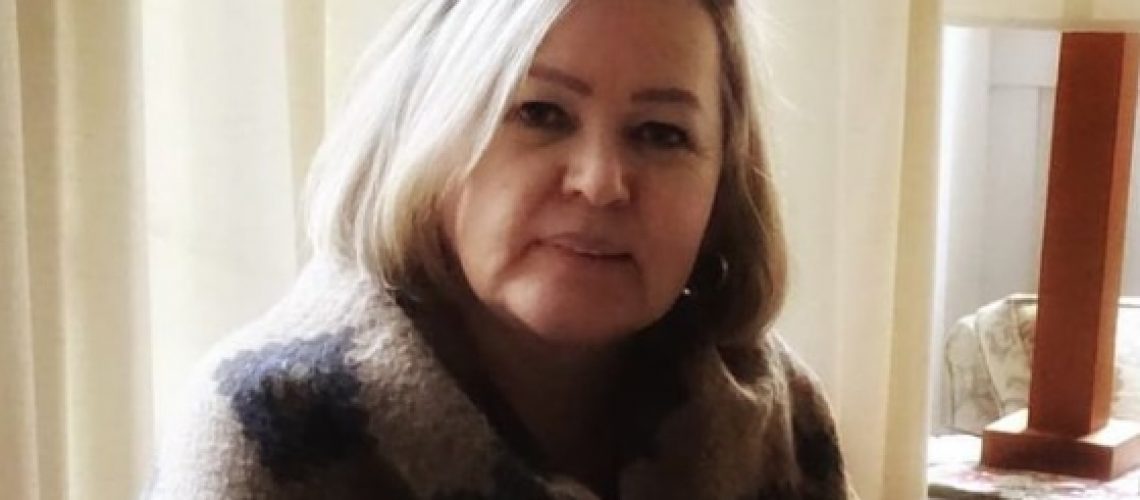
My arrival: The immaculate backyard is lit up by the morning sunshine. Trees that border the back yard cast shadows across the lawn. Some are thick and arching. Others are distorted reflections on the lawn that shift and change with the light. In the background, the Campbell River meanders steadily toward the ocean creating tails of white spray in its encounters with boulders along its path. Snowdrops cover the ground beneath the budding bushes in the garden.
Every few seconds, my eyes are irresistibly drawn to the beautiful scene that is framed by the window in front of my workspace. Peace and tranquility abound even with the intermittent sounds of hammering in the distance.
My heart rate has normalized. I can finally focus on my keyboard with the intention of putting some words onto the blank slate in front of me on this, the first day of a two-week writing retreat at the Haig-Brown House.
For the duration of my writing retreat, I’ve been working on a story about a missing chapter in the history of the education of the indigenous children of Canada. Much has been written about residential school survivors, but little is known about how their children, the indigenous people of my generation were educated. Most Canadians are unaware that the (now adult) children of my generation are survivors of Indian Day School, schools that were built and operated by the Government of Canada. And many Canadians are unaware that my generation of indigenous children were removed from our villages, placed in boarding homes, and enrolled in high schools in urban centres. This too, was a Government initiative. My book is intended to shed light on this relatively unknown chapter of history and to give voice to the thousands of indigenous adult children of Canada who may see themselves reflected in my story.
Being at the Haig-Brown House has provided me with 40 hours of uninterrupted writing which is nearly impossible when one is working at home. The writing retreat has allowed me time to write a few more chapters and to do some deep edits. Having Trevor Herriot as my mentor has been a godsend. His feedback and his support have put me on track to finishing this book.
I want to acknowledge the Campbell River Museum public program for providing me with this opportunity. Tomorrow, I will return to my home on Quathiaski Cove with a goal to set aside uninterrupted time for writing and see this book to completion.


